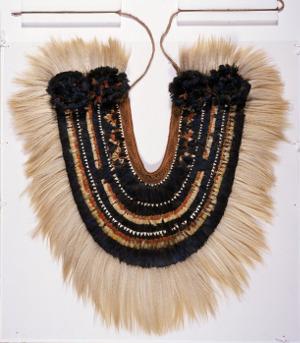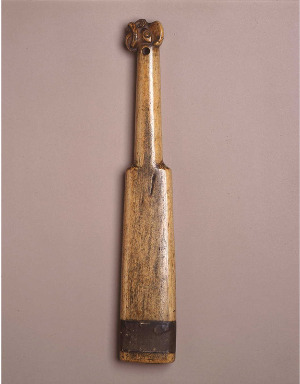Objects from the voyages of Captain James Cook

Liverpool’s ethnographic collections hold a small number of objects relating to the voyages of Captain James Cook (1728-1779). Cook made three voyages to the Pacific and Americas collecting both new knowledge, and also objects and specimens. Today Cook collections can be found in museums across the world including the Pitt Rivers Museum, Oxford, the Australian Museum and the Museum of Archaeology and Anthropology, Cambridge.

Some of the objects now in Liverpool’s collection, like this whalebone mallet from New Zealand, arrived at the museum after they had passed through the hands of several well known collectors and showmen based in Liverpool. Their Liverpool connection can be traced back to 1795, when William Bullock opened the 'Museum of Natural Curiosities' in Liverpool. In his 1801 museum catalogue he claimed to exhibit items “brought from the South Seas by Captain Cook”, although his claims as to exactly how many items came from Cook voyages shrank over the years!
In 1819 Bullock put the contents of this traveling museum, shown in Sheffield, Liverpool and London, up for auction. A Liverpool conchologist (shell specialist) William Swainson bought eight lots from the Bullock sale. Bullock also gifted a number of objects to Swainson, including the important breast ornament from Tahiti, pictured above, made from feathers, sharks' teeth and dog hair.
Having been deposited at Liverpool’s Royal Institute, an important centre for culture and learning the objects finally arrived at Liverpool Museum (as World Museum was known at the time) in 1942. You can see the whalebone mallet online in our New Zealand collection. You can also see it, and the breast ornament from Tahiti, in person in World Museum, in our World Cultures gallery.
